Results 2,441 to 2,450 of 12096
Thread: Anandtech News
-
12-20-12, 10:00 AM #2441
Anandtech: The Clover Trail (Atom Z2760) Review: Acer's W510 Tested
Microsoft’s Windows 8/RT launch has been a bit choppier than expected. I remember hearing rumors that the OS release could slip into next year, but it seems that the solution to the problem was to launch as devices were ready rather than delay everything. Surface was among the first out of the gate, and I was generally pleased with the tablet, but Microsoft’s partner devices have been slower to release. ASUS held its VivoTab RT launch on the same day as Surface RT, but there were many key absences from the launch week in late October.
Among those missing from launch week were any x86 Windows 8 tablets. Although for most of the year Intel had been quite confident in its Windows 8 tablet story, the fact that I had to secretly borrow one just to get some rough performance numbers in our Surface RT story was a problem.
A little over a month later and things are beginning to change. Contrary to popular belief, driver problems aren’t what kept the first Atom Windows 8 tablets out of the market at launch. A bug (not related to power management) caught several months ago caused schedules to slip by about a month and a half. Depending on whose design the OEM followed (Intel’s or their own), the implementation of the fix could come quickly or would take a bit longer. In this case, Acer and Samsung found themselves on the right side of the fence. We’ve had Atom based Windows 8 tablets from both companies for weeks now.
Vivek is working on our review of the Samsung ATIV Smart PC, while I’ll kick things off with Acer’s Iconia W510. Read on.

More...
-
12-21-12, 07:00 AM #2442
Anandtech: Capsule Review: Thermaltake Level 10 M Gaming Mouse
Input peripherals can be an interesting subject to tackle in these tiny bite size reviews. It's difficult to quantify strict performance, an issue ameliorated somewhat by the fact that actual performance (dpi, etc.) can often take a distant backseat to user comfort and the software included. Comfort is a very subjective thing as well; a mouse that's enjoyable to use for one person may be incredibly uncomfortable or even downright painful for another. High performance gaming mice can complicate things, and mice like the Thermaltake Level 10 M even more so.
Picking up with Thermaltake's successful Level 10 branding, the Level 10 M is advertised as being from the same BMW subsidiary that helped design their striking Level 10 enclosure. This mouse is genuinely packed to the brim with features, sporting configurable lighting, adjustable height and angle, four DPI settings that can be toggled on the fly, and seven configurable buttons (not including the four axis DPI adjustment switch). It's an awful lot of mouse; is it the mouse for you?

More...
-
12-22-12, 03:00 AM #2443
Anandtech: Streacom's FC10 and Nano150: Building a Fanless Ivy Bridge HTPC
HTPC enthusiasts often place a lot of emphasis on silent systems for obvious reasons. We have looked at systems with passive thermal solutions before, but never presented the build process for one. Back in May, we had covered Streacom's announcement of the fanless FC9 and FC10 chassis. With support for passive cooling of CPUs with a TDP of up to 95 W and a sleek industrial design, HTPC enthusiasts have been eagerly waiting for these units to hit the market. After some delays, Streacom finalized the design and started shipping the units to resellers in mid-November. We requested for samples of the FC10 chassis and the Nano150 PSU and Streacom's shipment reached us in the first week of December.
We are planning to use the FC10 and the Nano150 as building blocks for a passively cooled HTPC. Our intent is also to utilize it as a testbed for evaluating discrete HTPC GPUs. Read on for the first of a three-part HTPC series, where we will be presenting the build process and burn-in testing results for a completely passive and virtually silent Ivy Bridge-based HTPC.

More...
-
12-24-12, 04:30 PM #2444
Anandtech: The x86 Power Myth Busted: In-Depth Clover Trail Power Analysis
The untold story of Intel's desktop (and notebook) CPU dominance after 2006 has nothing to do with novel new approaches to chip design or spending billions on keeping its army of fabs up to date. While both of those are critical components to the formula, its Intel's internal performance modeling team that plays a major role in providing targets for both the architects and fab engineers to hit. After losing face (and sales) to AMD's Athlon 64 in the early 2000s, Intel adopted a "no more surprises" policy. Intel would never again be caught off guard by a performance upset.
Over the past few years however the focus of meaningful performance has shifted. Just as important as absolute performance, is power consumption. Intel has been going through a slow waking up process over the past few years as it's been adapting to the new ultra mobile world. One of the first things to change however was the scope and focus of its internal performance modeling. User experience (quantified through high speed cameras mapping frame rates to user survey data) and power efficiency are now both incorporated into all architecture targets going forward. Building its next-generation CPU cores no longer means picking a SPECCPU performance target and working towards it, but delivering a certain user experience as well.
Intel's role in the industry has started to change. It worked very closely with Acer on bringing the W510, W700 and S7 to market. With Haswell, Intel will work even closer with its partners - going as far as to specify other, non-Intel components on the motherboard in pursuit of ultimate battery life. The pieces are beginning to fall into place, and if all goes according to Intel's plan we should start to see the fruits of its labor next year. The goal is to bring Core down to very low power levels, and to take Atom even lower. Don't underestimate the significance of Intel's 10W Ivy Bridge announcement. Although desktop and mobile Haswell will appear in mid to late Q2-2013, the exciting ultra mobile parts won't arrive until Q3. Intel's 10W Ivy Bridge will be responsible for at least bringing some more exciting form factors to market between now and then. While we're not exactly at Core-in-an-iPad level of integration, we are getting very close.
To kick off what is bound to be an exciting year, Intel made a couple of stops around the country showing off that even its existing architectures are quite power efficient. Intel carried around a pair of Windows tablets, wired up to measure power consumption at both the device and component level, to demonstrate what many of you will find obvious at this point: that Intel's 32nm Clover Trail is more power efficient than NVIDIA's Tegra 3.

More...
-
12-25-12, 11:30 PM #2445
Anandtech: Closing the Loop: Contained Liquid-Coolers from Corsair and NZXT Compared
While closed-loop liquid coolers seem to perform at best comparably to the highest end air coolers, there's a certain appeal in their flexibility, stress on the motherboard, and sometimes even in cost. Prolimatech's industry standard Megahalems starts at $70, and that's before you even put halfway decent fans on it. Meanwhile, closed-loop coolers are getting to the point where you can find them for under $60. One of those is Corsair's H55, just one of the coolers we have in for review today.
Of course, in addition to the H55, Corsair has refreshed their H60, H80, and H100s with the H60 2013 Edition, the H80i, and the H100i. The "i" designates Corsair's Corsair Link technology, software that allows you to control fan speeds from within Windows as well as potentially integrate and monitor other Corsair peripherals. Not to be outdone, NZXT hit us with two coolers based on 140mm fans instead of 120mm: the Kraken X40 and X60. With a 280mm radiator, the Kraken X60 could very well be the best closed-loop cooler available. So how do these new coolers bear out?

More...
-
12-28-12, 09:30 PM #2446
Anandtech: Arctic Cooling Accelero Hybrid VGA Cooler Review: Not For the Faint of Hea
Traditionally in the desktop space, the next step after high quality air cooling has been high quality liquid cooling, usually centered around custom designed cooling loops that cost a pretty penny in equipment. The industry has met this desire halfway by producing closed loop liquid coolers for the CPU not unlike the ones we tested recently, but interestingly the real power monster in most enthusiast desktops has needed to be served by reference coolers and sometimes exotic custom solutions offered by partners. Any type of liquid cooling has continued to be the province of the more extreme enthusiast.
Arctic Cooling changes some of that today with the Accelero Hybrid. Aftermarket VGA coolers aren't totally uncommon, but generally they're harder to build and market due to the more specific needs of cooling a graphics card. You have to cool the GPU, the video memory, and the voltage regulation, and the layouts of these parts varies from vendor to vendor and card to card. The Accelero Hybrid includes a 120mm radiator courtesy of Asetek, a cooling shroud for board components, and enough tiny parts to choke all but the heartiest of housecats. At $169, it also costs a pretty penny. Is it worth the effort, the money, and the risk?

More...
-
12-31-12, 06:30 AM #2447
Anandtech: Z77 mITX Round-Up: Five of the Best – MSI, Zotac, ASRock, EVGA and ASUS
The mini-ITX motherboard market seems like a fast growing segment.  It has many applications in terms of small home servers, work machines, HTPC devices, mobile gaming desktop machines, and much more.  With most home users / non-enthusiasts using only one PCIe device and perhaps 1-2 SATA ports, a mini-ITX board makes perfect sense for a smaller system and perhaps a lower power footprint.  In this review, we take five of the Z77 mITX boards on the market today for a grand sweep using the HD 4000 enabled i3-3225.  Enter into the test bed the MSI Z77IA-E53, the Zotac Z77-ITX WiFi, the ASRock Z77E-ITX, the EVGA Z77 Stinger and the ASUS P8Z77-I Deluxe.  Game on!
 

More...
-
12-31-12, 11:30 PM #2448
Anandtech: Fractal Design Node 605 Case Review: Is Fractal Design Ready for Primetime
Media center enclosures can be a very tricky business. 25 years ago, horizontally-oriented cases were the norm, but the ATX standard complicates things. We're also dealing with hotter components now than we were then. To top everything off, having a PC in your living room introduces even more new wrinkles: it shouldn't look out of sorts next to other home entertainment electronics, and it can't be loud or intrusive in any way. Producing a good HTPC case is a surprisingly tall order, and it's one that Fractal Design has elected to take a crack at with the larger of their new Node cases.
While the smaller Node 304 lacks any optical drive bay of any kind and is geared for home server work, the Node 605 is designed to be a media center first and foremost. Hiding behind the drop-down door on the front are a slim-line optical drive bay, a card reader, and assorted connectivity. And like the Node 304, Fractal Design built the Node 605 to be flexible, able to support up to four storage drives and a full ATX motherboard. So is this case ready for a spot in your entertainment center, or did Fractal Design produce a rare misfire?

More...
-
01-03-13, 05:34 AM #2449
Anandtech: Samsung ATIV Tab Review: Qualcomm's First Windows RT Tablet
Clover Trail was late by about a month to the Windows 8 launch. Most of the traditional PC partners were delayed either by Intel or by burdens of their own. As much as we wished Surface RT would’ve launched with a different SoC, truth be told I don’t know that anyone else outside of NVIDIA could’ve met the aggressive schedule that Microsoft set. Qualcomm and TI were both design partners working on Windows RT devices, but neither of them had solutions available at launch.
Now that we’re two months out from launch however, things are starting to change. We’ve already reviewed one of the first Clover Trail tablets, with another on the way. And just before the holidays last year, this thing showed up:
It may look like the Samsung ATIV Smart PC that Vivek is working on, but it’s the smaller 10.1-inch ATIV Tab featuring Qualcomm’s APQ8060A SoC. Yep, this is the first Windows RT tablet we have in house to use Qualcomm silicon.
Read on to see how Qualcomm's APQ8060A handles Windows RT.

More...
-
01-03-13, 07:30 AM #2450
Anandtech: Marvell Adds NVDRIVE to DragonFly Family of Enterprise Storage Accelerator
Marvell's DragonFly virtual storage accelerators have been around for close to two years. Back in April 2011, StorageReview had some hands-on time with the DragonFly storage accelerator. In August 2012, at the Flash Memory Summit, Marvell officially announced  the general availability of the DragonFly platform with two members, NVRAM and NVCACHE.
Companies such as Fusio-IO and Violin Memory are growing fast, thanks to exploding interest in the usage of Flash memory for enterprise storage. Bandwidth and latency / IOPS requirements leave PCIe as the interface of choice for this purpose. In the consumer market, we have seen SATA SSDs gain acceptance as a front end for bigger capacity HDDs. In the enterprise market, PCIe SSDs are emerging as a back-end for DRAM.
Marvell's DragonFly platform's base offering is NVRAM, which consists of a PCIe card with up to 8 GB of ECC DRAM on it and up to 32 GB of SLC NAND Flash. There is an ultracapacitor to guard against sudden power loss by backing up the DRAM contents to the Flash. The NVRAM can be used as a data cache for DAS, SAN and NAS arrays irrespective of the protocol used to access the underlying storage. The use of DRAM allows for ultra-low latency and response times (in the order of tens of microseconds). The NVCACHE product, on the other hand, uses off-the-shelf SATA MLC SSDs to augment the storage capacity of the NVRAM product. The DRAM on the PCIe card serves to address the write IOPS and latency limitations of the SSDs. This results in a performance similar to that of high-end PCIe SSDs.
Marvell is announcing the latest addition to the DragonFly family, the NVDRIVE, today. Similar to the NVCACHE, the NVDRIVE is a PCIe SSD storage / caching solution. Instead of relying on external SATA SSDs, Marvell has integrated multiple SanDisk mSATA SSDs on the board. The hardware itself has a PCIe 2.0 x8 interface with 4 GB of DRAM and up to 1.5 TB of usable Flash capacity. The unit can also act in multiple modes (NVRAM / SSD / cache). The ultracaps provide the power backup to backup the DRAM in case of power issues (the amount of DRAM is basically dictated by the largest ultracap that could be placed on the board). The additional cache serves to increase the SSD endurance also. Marvell provides a turn-key solution with firmware and software support (virtualization-aware block and file object filter drivers for caching on multiple Linux distributions). The software also allows for dynamic cache provisioning.
Marvell claims that the NVDRIVE is a price/performance leader with more than 10x TPM (Transactions per minute) per dollar compared to the leading PCIe SSD caching solution (read, Fusion-IO) in the HammerORA TPC-C MySQL 5.1 database benchmark.

More...
Thread Information
Users Browsing this Thread
There are currently 49 users browsing this thread. (0 members and 49 guests)




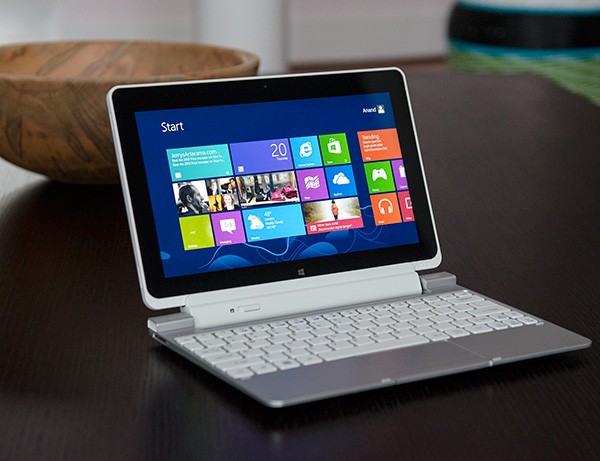



 Quote
Quote.jpg)
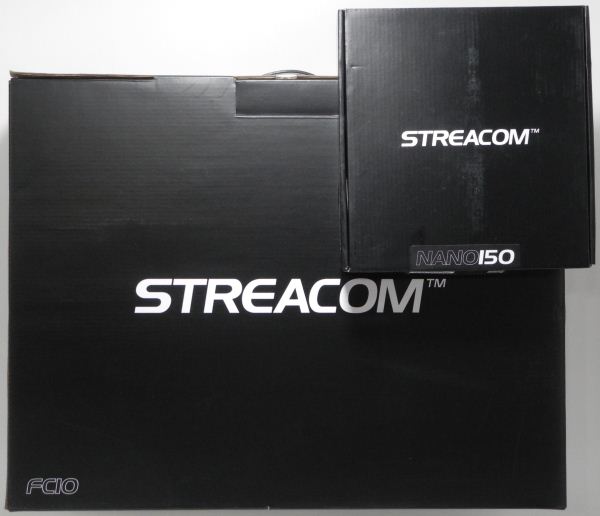
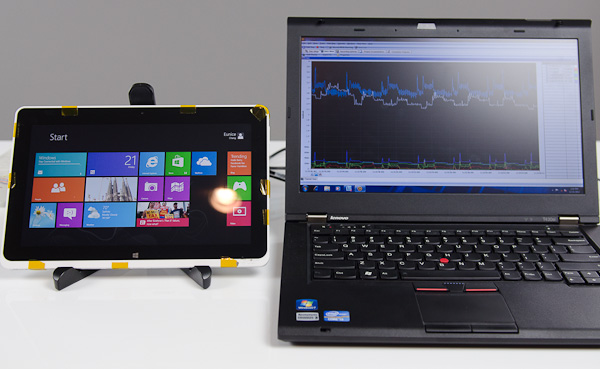
.jpg)
.jpg)
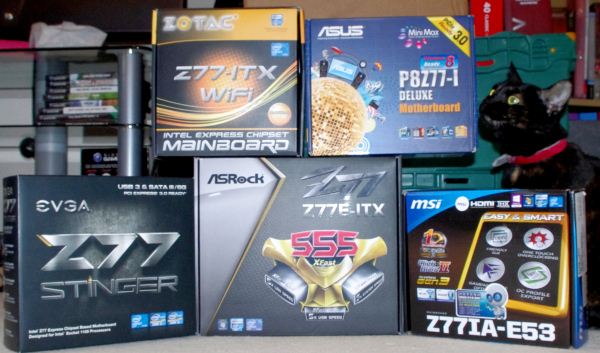
.jpg)
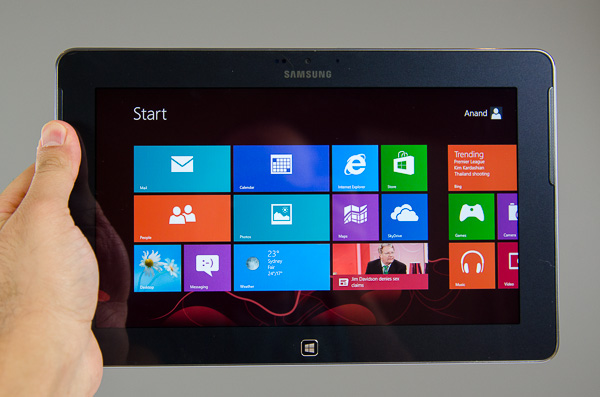

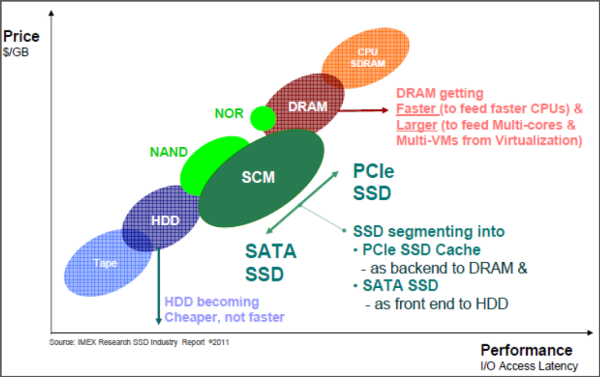
















Bookmarks